Usually, when someone utters the phrase, “The Athens of ….” whatever region, they mean that the region is a center of enlightenment and learning. While this particular saga does end with a school, the story begins with civic jealousy.
Greenville County did, in fact, have its own town named Athens for a short while. I first heard about the town from Dot Bishop at the Travelers Rest History Museum. I made a note to add it to my list of ghost towns until I could do a bit more research on it, and see if I could find any remnants of the old town. That time has finally come, and here’s what I found…
In the 1800s the town of Travelers Rest developed along two distinct stretches. There was the southern, or “Lower” part that ran along Poinsett Highway down toward Greenville, and a norther, or “Upper” part that ran along the Geer Highway north of McElhaney Road. For whatever reason, rivalry developed between these two sections of town. While still one civic unit, incorporated in 1891, each section had their own identity, and even had their own small railroad depot. Both depots figure into a description of the town in the articles of incorporation.
By 1888 the Carolina, Knoxville, and Western Railroad, later known as Greenville and Northern Railroad, aka “The Swamp Rabbit”, was carrying passengers on a regular basis from Greenville to northern points in the county. One of the popular stopping points was the Spring Park Inn, a hotel and resort on the southern end of Travelers Rest. There wasn’t a depot there, so the hotel owners and railroad collaborated to build a pavilion for passengers, in addition to the smaller depot in the Lower section of town.
Not to be outdone, the residents of the Upper section built a new and improved depot, just north of the current location of Sunrift Adventures.
The rivalry came to a head in 1893. According to historian Mildred Goodlett in her 1966 book The History of Travelers Rest, “…a certain school master employed at the “High” [sic] school, was accused of unethical conduct and several of the trustees and stockholders in the school asked that he be dismissed. Certain of his friends objected to this and feelings ran high for a time.”
Perhaps the new town did begin with and education after all. For whatever reason, by December of that year the Upper section of town decided to split off and become its own town of “Athens.”
The articles of incorporation describe a one square mile civic unit, starting at McElhaney Road and running north along either side of Geer Highway. If overlaid onto preset-day Travelers Rest, it would look something like this…
As for the name, local historian Mann Batson wrote in his book A History of the Upper Part of Greenville County that the town may not have been named for the historical Greek city, but for a local family.
Northern McKinney remembers a cemetery of well-marked graves just behind the store owned by his uncle, Mr. Jesse Poole. This would have placed the cemetery just behind the car wash at the intersection of the Geer Highway and McAlhany Road. The family name on the gravestones in this cemetery was Athens. This could be the reason the town was named Athens.
The town’s records survive, and there are listings of the town’s officers, including the “intendents”, a term used instead of “mayor.” The new town even had its own telephone exchange. However, according to Goodlett, the records also describe a fairly rowdy place.
From the minutes contained in this book we learn conditions were primitive in this period. Persons frequently riding their horses, or driving their wagons on the narrow dirt sidewalks, resorting to drunken and disorderly conduct on streets and in stores, but with all being restrained or punished for such offenses by being fined or placed in the guard house for a short period of time.
It’s interesting to note that Section 2 of the Articles of Incorporation of the town state that, “…the sale of spiritous or intoxicating liquors within the corporate limits of said town of Athens is hereby prohibited.” Regardless of where they found their booze, conditions were bad enough that the only record of civic improvement in the town is the construction of a jail.
In 1989 eighth grade students at Northwest Middle School documented construction of the Athens Jail in their “Echoes” publication. According to their research, the proper term was not jail, but “guard house.” Shortly after incorporation bids were taken for construction of the guard house, and M. O. Carter got the job with the lowest bid of $23.75.
The students interviewed Mann Batson, who had the details from the town records. Batson reported that the jail was a ten by twelve foot structure with a single door and single window. It was less of a jail than simply a place to hold offenders temporarily. According to Batson, “In other words it was just a big wooden box with a ceiling.”
The only civic improvement for the town of Athens eventually wound up as a corn crib on Houston Batson’s farm. By 1900 the experiment was over. Athens was broke. The prodigal upper town was reabsorbed back into Travelers Rest.
Travelers Rest itself reincorporated in 1959. Here Mayor George Colman and Councilman Calvin Garrett look at the new City Limits sign.
Even though the town was no longer, it wasn’t the end of the name. Athens Baptist Church was established in the area. Sadly, I haven’t been able to find any further information on the church. I haven’t exhausted all avenues, though.
Athens Elementary School was built in 1956 for the segregated African American population of Travelers Rest, and named for the historical area. The school is a low, flat building typical of the Equalization Schools of the time. I am absolutely sure that this was an Equalization School, but it’s not listed on the SC Equalization Schools website.
I wondered if there were any remnants of the town of Athens still visible, so I set off on an exploration. The house that once served as Spring Park Inn still stands, next to the Spring Park Golf Center. The house is now a private residence.
I drove up to the intersection of Main Street with McElhaney.
If I read the description correctly, everything from Tandem Crepery south would have been part of Travelers Rest.
Sunrift Adventures, on the north side of McElhaney, would have been part of the new town.
Although some survive, many of the buildings have changed since the late 1800s. Even though it was drawn in 1949 long after the town of Athens folded, this Sanborn Map of Travelers Rest gives a better indication of the north and south divisions. Here’s the northern end. Only the upper portion of this area would have been in Athens.
Here’s the lower end.
At the very north end of Athens is the Grandview Cemetery, disconcertingly right across from North Greenville Hospital.
I drove on up to the location I had in my GPS for Athens Baptist Church. The sign was now blank, and it looked like the church building was no longer in use.
Athens Street ran along the south side of the church.
I followed Athens Street to its end. There, at a locked chain link fence, I could see a school that matched what I had found for Athens Elementary School.
I drove back to McElhaney and around to the entrance of Springbrook Behavioral Health Center. The road winds past a small lake and open field, unlike what I would have expected for a segregated school from the 1950s, but not unlike what I would expect for a mental health facility. I drove up, not sure what to expect. I found much more activity than I wanted, so I didn’t take photos, but turned around. I did snap one photo to confirm the architecture, making sure I didn’t get any patients or staff in the photo.
I could see from Google Earth that the school has been greatly expanded. The original building looked like it was mainly administrative, but residential wings were added later.
So, the only remnants I could find of Athens were a semi-abandoned church, a mental health facility, and a street sign. Even so, it’s an interesting story.
One last word…
I’ve not been able to find in information on Mann Batson’s cemetery. There was a small car wash across from Sunrift, however, Google Earth shows no signs of a cemetery. There is no record of it in GNIS, and I couldn’t even find it on Findagrave. I’m beginning to think that story is apocryphal, and perhaps the town was named for the ancient city in Greece.
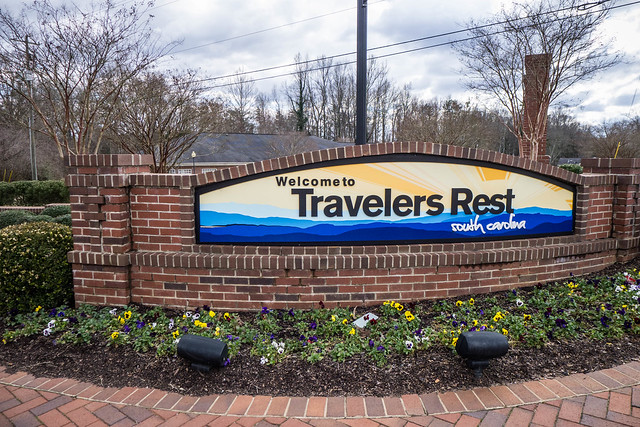
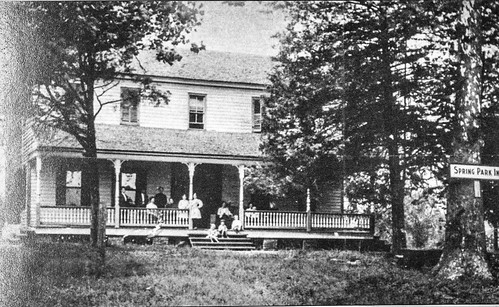
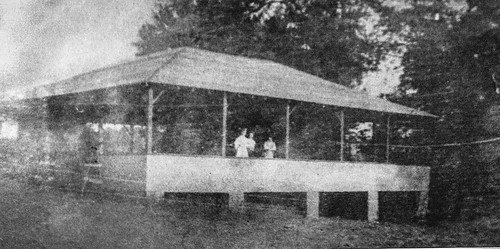
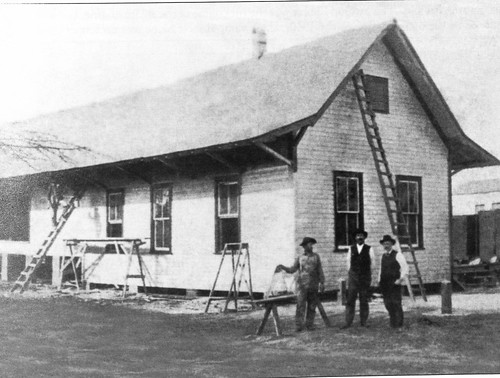
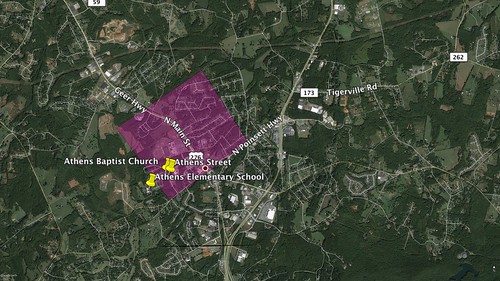
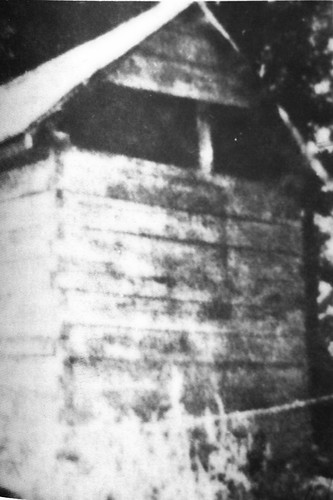
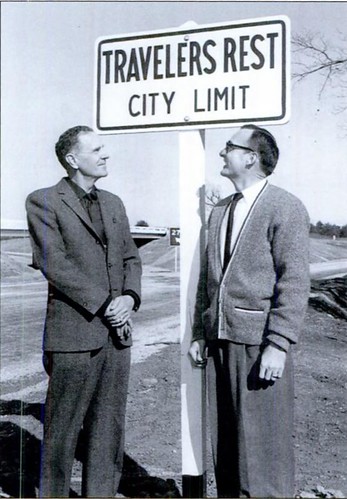
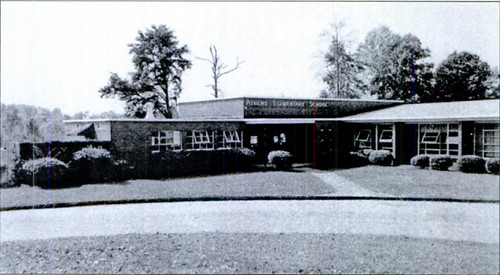
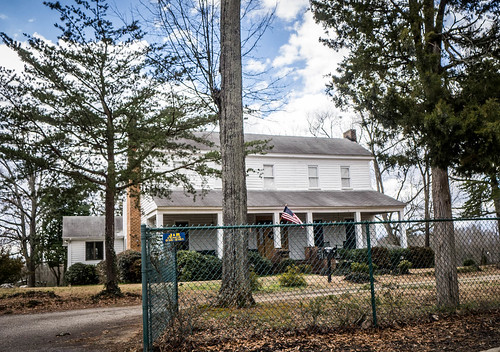
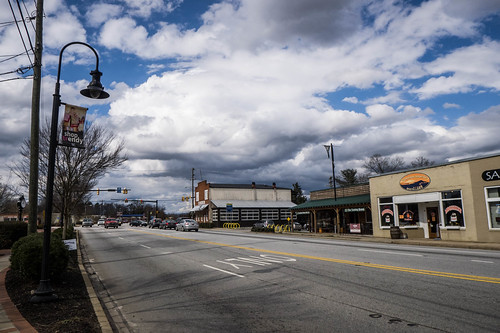
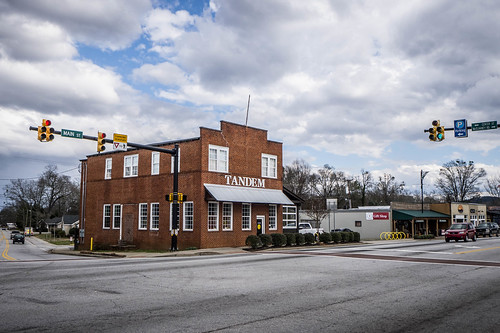
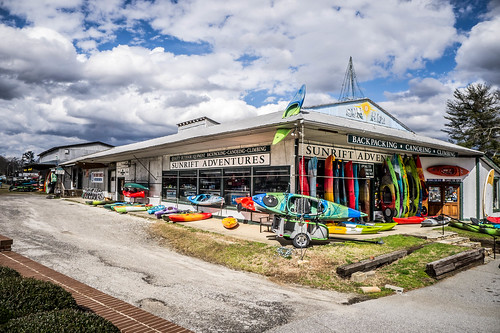
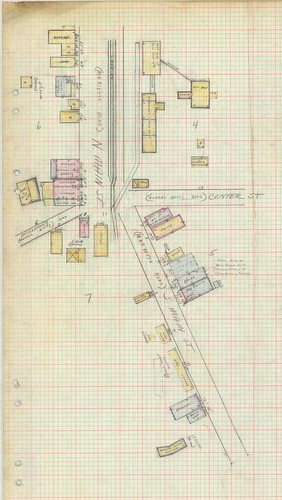
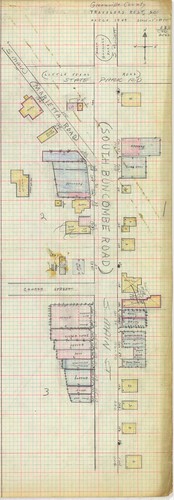
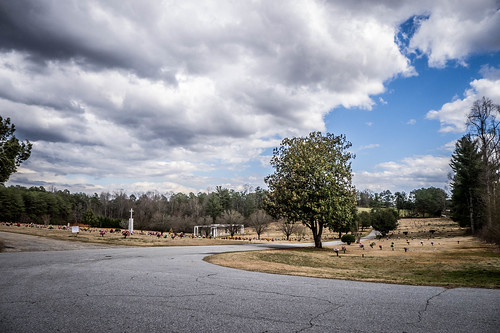
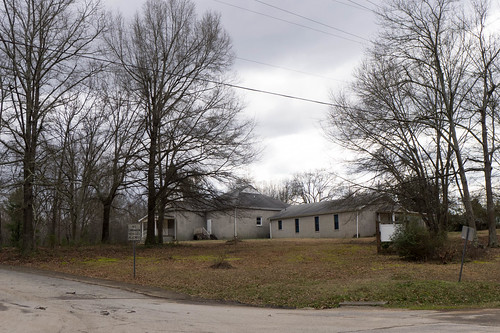
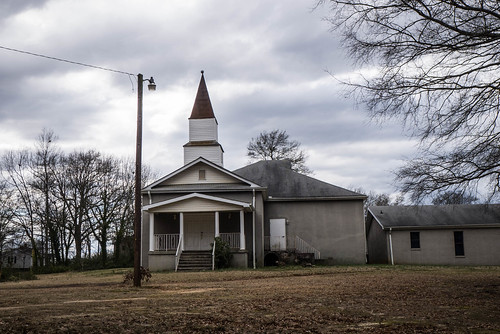
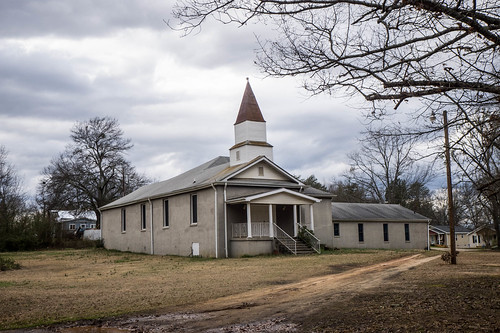
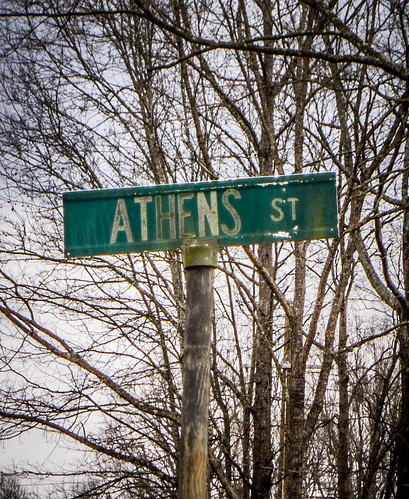
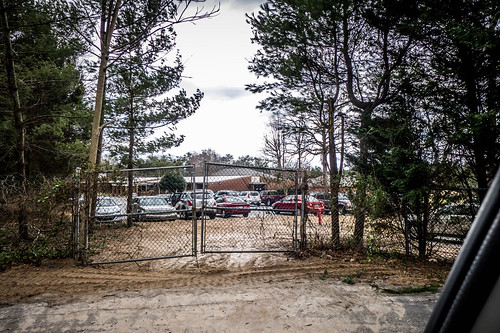
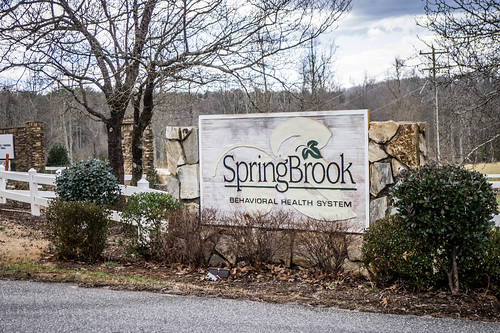
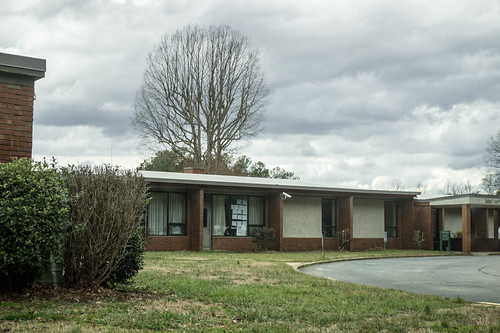
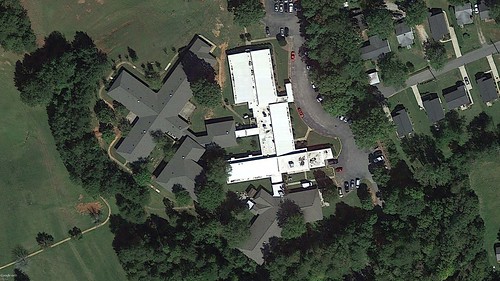
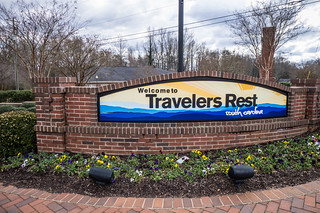
I remember the old Athens elementary school. It did remain open after the end of segregation.
Thank you for making this page. My great grandmother was born in 1899 in Bates Township, and lived in Athens Town, Bates township per the 1900 census and her parents lived beside her. Glad to find a website about this section of town.
I went to Athens Elementary School. We were the last group to attend a segregated school. That was 1976-77 when the school closed. I have relatives that still live by the old school. It’s a youth center or something now.
I went to kindergarten and first grade at Athens Elementary. We were the last classes. This was in 1976, after that year they split us up amongst three schools depending on where you lived. I went to Slater-Marrietta along with many others, the rest went to the old TR Elementary ( the old high school where Gateway Park is now ), Ebeneezer on Old White Horse Rd, and Armstrong the original building. I have fond memories of Athens and made friendships that still thrive today. I ask that you dig a little deeper and interview some of the people that went there.
I taught at Athens Elementary the first year of integration. At that time it was made into a 6th grade center and Kindergarten.
Did you know a teacher named Miss Smith, who taught second grade at Athens?
Mrs. DeMers,
Do you also remember a Ms Grier that was a kindergarten teacher ? Sadly, she is the only name that I remember from there.